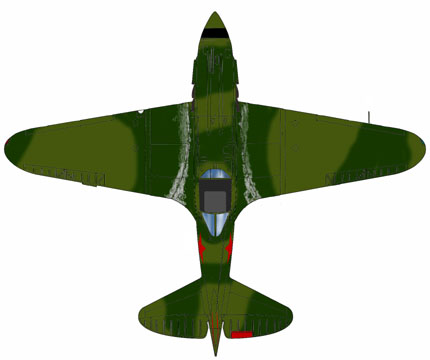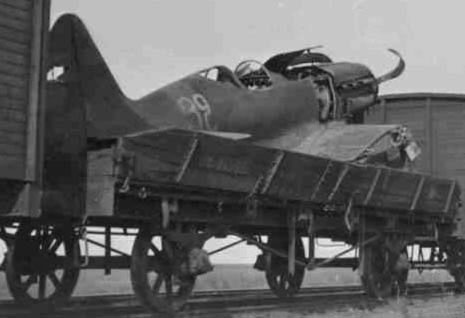Its characteristics look to be:
-
late model, probably with slats;
-
without radio and radio mast;
-
apparently without the sliding canopy (it's not clear if it was flown so,
or it was lost during the recovery);
-
inert gas pipe on the left exhaust stack;
-
camouflaged green and dark green with light blue undersurfaces;
-
yellow (or light blue? or...) number 32, freehand painted (perhaps airbrushed),
overposed to the fuselage star; the shape of the number is slightly different
from right side to left side;
-
red painted trim on fuselage and, perhaps, on the right elevator;
-
green spinner with a black band;
-
black propeller blades;
-
black sprayed stripes (or smoke traces?) on the main gear door.
According to researches of Erik Pilawskii, the camo scheme shown on the
right is typical of green/ dark green camouflaged aircrafts, adapted to
what is visible on the photos. |
 |




